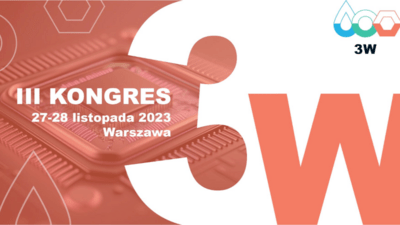The green energy transition has already begun. Hydrogen will be an important element of this process. Due to its unique physicochemical properties, low molecular weight and the lowest specific gravity among all gases, hydrogen is the object of interest among scientists, engineers, entrepreneurs, and a source of inspiration for many innovative technological solutions.
The 3W Idea is a response to the greatest contemporary challenges faced by the whole world: climate change, energy transition, availability of drinking water. These three resources: water, hydrogen and carbon, correlate with each other in the environment and respond to the challenges faced by the whole world today. The best example of this is green hydrogen, the production of which requires crystal-clear water, obtained by purifying polluted water (e.g. saline) with the use of carbon technologies. Water, hydrogen and carbon, thanks to their interdependence, can become the answer to global problems – said Adam Żelezik, Director of the 3W Department at BGK.

Hydrogen has many faces
For years, hydrogen has been considered the fuel of the future. It is widely believed that hydrogen energy can become an environmentally friendly alternative to fossil fuels. Thanks to its properties, hydrogen provides the opportunity for cross-sectoral integration. It is a valuable energy carrier, fuel and raw material. It is used in the production of fuels, fertilizers and in numerous technological processes, such as the production of glass and steel. It is also widely used in the food industry to protect food from oxidation and in the production of margarine during the hydrogenation process.
We use it in transportation to power vehicles. The first work on hydrogen propulsion began in the 1990s. Currently, we use hydrogen in two ways: as a fuel in internal combustion engines and in fuel cells to generate energy that powers an electric motor. Vehicles powered by hydrogen are quiet and environmentally friendly. Due to its high calorific value, hydrogen allows you to cover longer distances than in the case of a battery-powered system.

Hydrogen is also widely used in the generation of electricity and heat for commercial and residential purposes, and although their share on a global scale is still marginal, these technologies are still evolving and the first demonstration installations are being built.
Since the international demand for hydrogen may exceed even up to 200 million tons by 2030, waste and the energy resources contained in it will play an increasingly important role in sustainable energy production. Recovering hydrogen from waste materials allows the conversion of waste, such as plastic and mixed municipal waste, into a usable form of energy and reduces the amount of landfill waste. Waste gasification at a temperature of 1300°C turns it into gas the treatment of which allows for the separation of pure hydrogen and the recovery of thermal energy.
And that’s not all! Hydrogen-fueled power plants producing energy through electrolysis will soon become an alternative to the currently used energy sources. They are more efficient, more flexible and greener.

Hydrogen has great potential to play a significant role in the near future. It can help decarbonise the global economy, meet climate goals and improve the reliability of energy systems. Hydrogen is also of interest to Polish scientists. Among the goals set by the 3W Interdisciplinary Innovations Centre is the development of a strategy for the implementation of renewable energy sources, including hydrogen.







